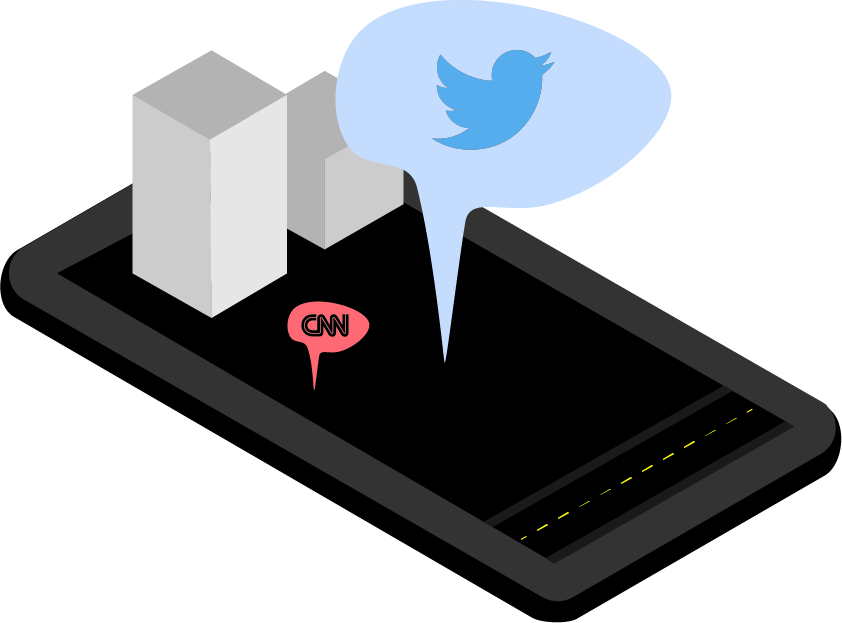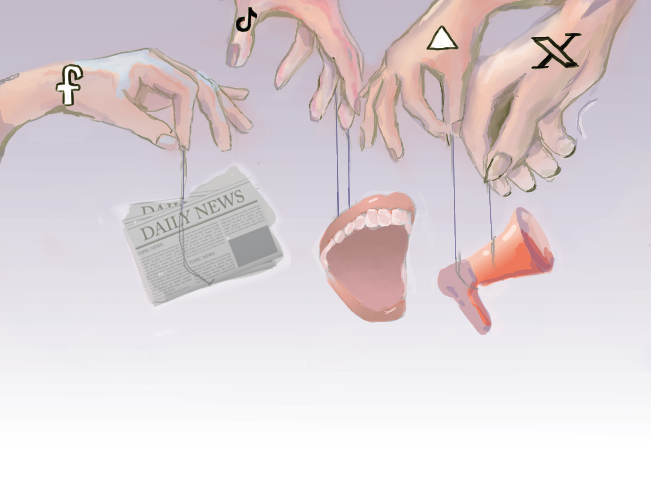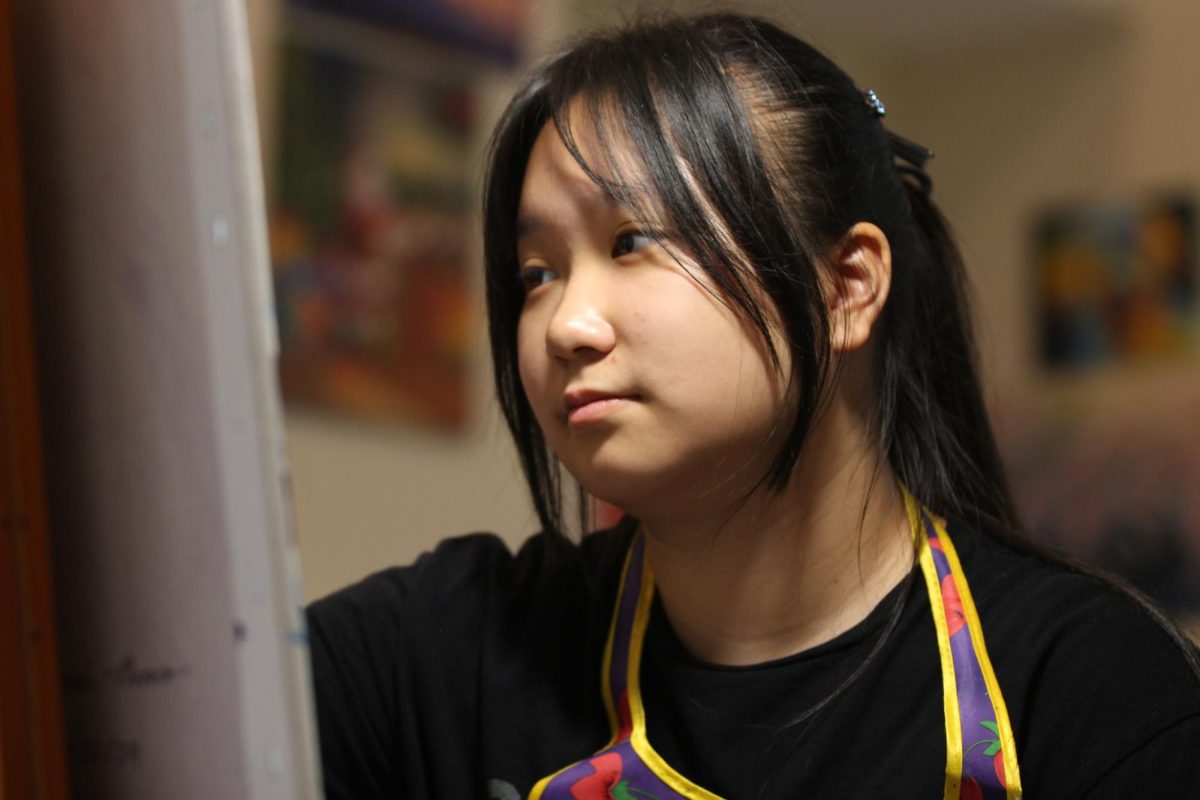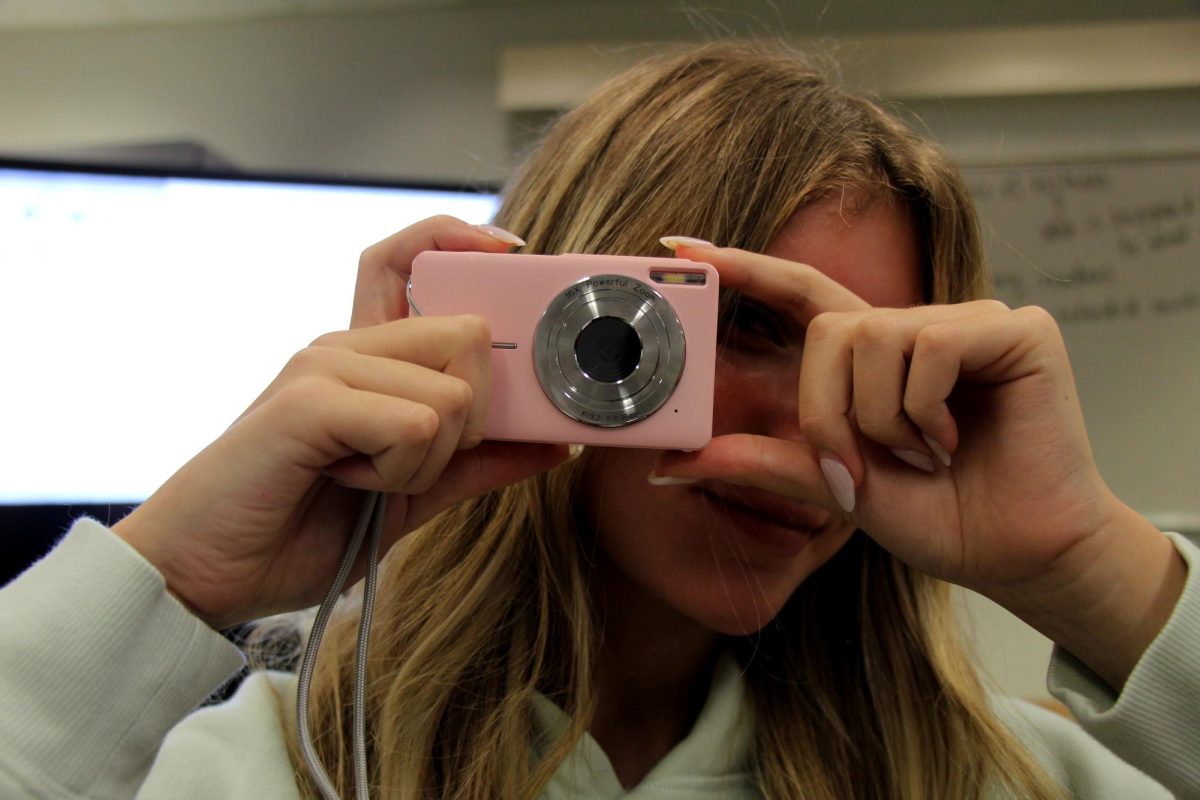
Compared to those raised in past generations, teens today are receiving their news from modern resources in unimaginable ways. Modern news must have modern ways to reach the public. From newspapers to broadcast radio, news and how it is reported has evolved drastically.
“[In high school], we did have a lot of news starting to become available online so you could access newspaper articles on the internet but most of the time I was watching the news on the TV with my parents,” English teacher Laura Rower said. “Sundays were big news days, I remember bringing in the newspaper, handing it to my parents and they would pass down the information to me.”
Twitter defines itself as, “what’s happening in the world and what people are talking about right now.” Many teens and young adults rely on Twitter to relay quick, informative news at the touch of a finger. With its easy to use ‘trending’ page, users can find what is currently popular in different regions and countries all around the world.
Whether it is the latest Kardashian scandal or updates on the 2020 presidential election candidates, almost every topic is talked about on the platform.
Important political and social figures are joining the social media bandwagon to stay more connected to their followers, resulting in a more transparent connection between a candidate and possible voters or fans and their favorite artists.
“I use Twitter to interact with influencers that I look up to,” sophomore Ryan Shinn said. “It helps me directly interact with them and they have the ability to interact back.”
About two-thirds of Americans get their news from social networks, with most households having switched entirely from physical newspapers to online resources. According to a study done by Common Sense Media, 49% of teens use social media as a way to get their news followed by a close 47% who rely on family members or peers.
“I started becoming an avid twitter user to become more politically involved and informed,” sophomore Alexis Tracton said. “I have a good mix of entertainment and politics on my feed.”
Twitter strives to stand for freedom of expression on all sides of every story. In a sense, every user is a reporter. Anyone can add their opinion or critique online while still following community guidelines, which can be ‘retweeted’ or commented on by others. Posts cannot be edited due to this “retweet” feature.
Although Twitter does showcase many advantages such as speed and accessibility, there are some limitations to the platforms uses. Limiting the amount of characters on every post to only 240 is a problem users face on a daily when trying to tell a story completely. Which leads to another issue, accountability. The truth can be misconstrued when anyone can post anything for the public to see without it being verified.
Many social platforms have added a verification tick or symbol on authentic accounts to combat this problem.
“I definitely think teens today have a much harder time time navigating through credible sources and figuring out what’s real news and fake news,” Rower said. “On the internet, there’s a lot of freedom on what you can post, you never know who’s posting what.”
Since 2006, Twitter has welcomed over 1.3 billion users and remains to be one of the most popular social media platforms in the world.








![National Honor Society Sponsor Lauren Saccomanno watches guest speaker Albert Price speak to NHS members. National Honor Society held their monthly meeting with Price on Monday, Nov. 4. "[Volunteering] varies on the years and the month, but we have started a couple new things; one of our officers Grace started a soccer program," Saccomanno said. "We have been able to continue older programs, too, like tutoring at Riverglades. NHS's goal is to have as many service projects as possible."](https://eagleeye.news/wp-content/uploads/2024/11/xNOeKNVwu7aErpVyJHrHogagZUUcLLosjtbIat94-1200x900.jpg)

![Ice Ice Baby. Skating to "Waltz" and "Romance" during her long program, figure skater Ava Zubik competes at the Cranberry Open in Massachusetts on Aug. 12, 2022. She scored a total of 86.90 on her short and free skate program, earning fifth place overall. "I try to make it [competing] as fun and enjoyable as I can because it's my senior year, and so I want to really enjoy competitive figure skating while it lasts," Zubik said.](https://eagleeye.news/wp-content/uploads/2024/11/skater1-799x1200.jpg)
